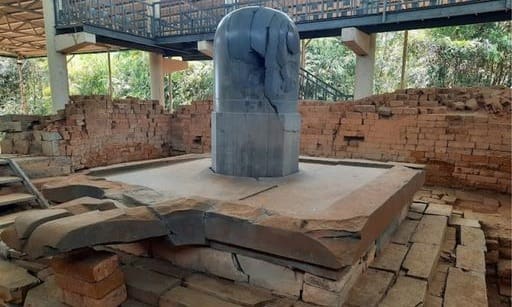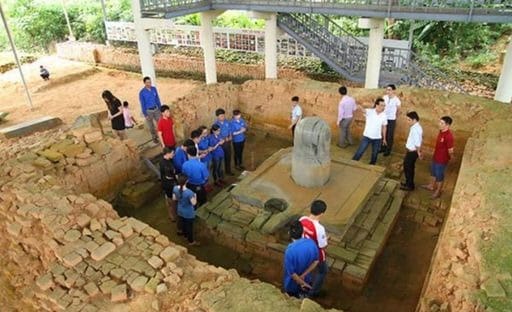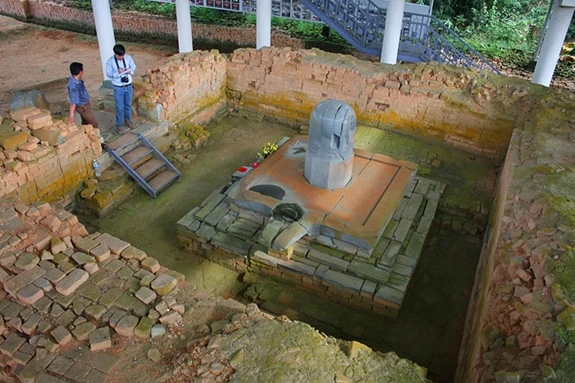In recent days, news about a Shiva Linga discovered in Vietnam has been going viral on social media platforms. It is said that the Shiva Linga was found during excavations at Cat Tien, an archaeological site located 150 kilometers from Ho Chi Minh City, Vietnam. However, tracing back the origins of this news reveals that it was actually reported a few years ago.

The Cat Tien archaeological site was accidentally discovered in 1985 and has since undergone numerous excavations, uncovering evidence of a Hindu civilization dating from the 4th to the 9th century C.E. The Shiva Linga measures 2.27 meters in height. In 2020, a Vietnamese news outlet reported that large-scale excavations began on March 12, 2020, at the Cat Tien site in the Cat Tien district of Lam Dong province, located in the Central Highlands.
These excavations, a collaboration between the provincial Department of Culture, Sports and Tourism and the Southern Institute of Social Sciences’ archaeology center, were planned to last one year. The site, recognized as the Holy Land of the Brahmin religion, dates back to the 4th to 8th centuries AD. It spans hundreds of hectares and extends approximately 15 kilometers along the Dong Nai River. First excavated in 1999, the Cat Tien site was designated a special national relic in 2014.
The news also reported that the site featured temple towers from the 7th or 8th century AD. However, archaeologists discovered that much of the surface architecture had been damaged. Despite this, hundreds of thousands of artifacts have been uncovered at the site, including artworks, statues, and weapons made from a variety of materials such as gold, silver, bronze, steel, gemstones, crystal, ceramics, and sandstone.

This indicates that the discovery of the Shiva Linga was actually reported as early as 2012. This finding suggests that the practice of Shaivism dates back much further than previously believed. It also highlights the widespread presence of Hinduism and its religious practices across various parts of the world. The historical reach of Hinduism, evidenced by such archaeological discoveries, underscores its profound and extensive influence on diverse cultures and regions throughout history.
The viral news about the Shiva Linga discovered at the Cat Tien archaeological site in Vietnam not only underscores the site’s historical significance but also illuminates the extensive reach and enduring legacy of Hinduism and Shaivism across the globe. This discovery, initially reported in 2012 and highlighted again in recent excavations, demonstrates the far-reaching influence of Hindu religious traditions and their pivotal role in shaping the cultural and spiritual landscapes of diverse regions throughout history.
Source: Vietnamplus
Follow us on Instagram, Facebook or Telegram for more updates and breaking news.








